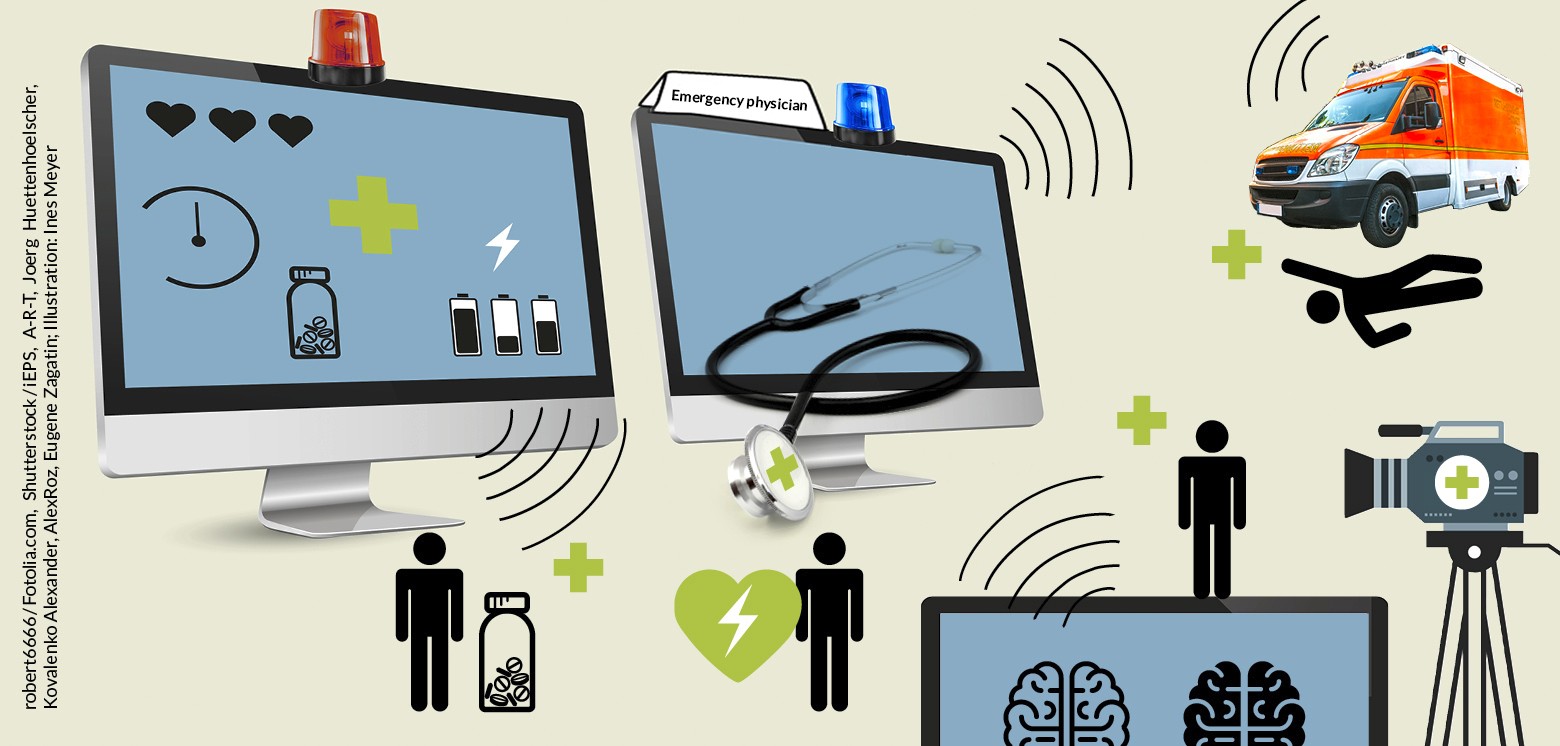The German Telemedicine Portal lists a total of 169 telemedicine projects in the country. The range of items covered point to the areas where telemedicine is helping improve health care delivery and close gaps in the healthcare sector. However, many projects fail to develop beyond the pilot phase to become part of standard care. Indeed, Germany currently features a patchwork quilt of telemedicine. Last year, we took a closer look at four pioneering projects, examining the key factors driving their success. In the coming weeks, individual representatives of these pioneering projects will be invited to offer their thoughts here in this blog.1
Innovations in telemedicine face a long road ahead in terms of acceptance and integration into standard care in Germany. This statement applies to all four of the projects analyzed by the Berlin-based IGES Institute on our behalf as part of our German-language study “Telemedizinische Prozessinnovationen in die Regelversorgung” (Telemedicine Process Innovations in Standard Care). The projects selected for the study are exemplary of the different areas of the healthcare system in which telemedicine can improve care workflows – whether in acute emergencies or in a patient’s home environment. They include video-based outpatient therapy for Parkinson’s patients, telemedicine-based monitoring of implanted cardioverter-defibrillators, the city of Aachen’s tele-emergency consultation service (Telenotarzt) and the state of Bavaria’s Telemedical Stroke Network (TEMPiS) in emergency stroke cases). Our analysis of these projects shows that while proven reliability and functionality are important success factors, there are other, more strategic issues influencing project outcomes.
Telemedicine can optimize care workflows – particularly in acute emergencies
Telenotarzt, a tele-emergency consultation service underway in Aachen, Germany is one such example. Emergency responders receive around-the-clock support through the service’s command center, which is staffed by experienced tele-emergency physicians. These physicians are to responders through both a mobile device and a communication unit that is permanently installed in each emergency vehicle. Images and vital signs, for example, can be transmitted in real time to the command center. The use of tele-emergency physician support can prove helpful in bridging the time between an emergency call and responder arrival and also when decisions must be made in unclear emergency situations.
A second example is the Telemedical Stroke Network (TEMPiS), a telemedicine project for integrated stroke care in southeastern Bavaria. For a number of years, TEMPiS has been helping clinics in rural areas by providing a unique form of assistance that includes a tele-consultation service involving neurologists from larger Bavarian clinics who are directly connected to the emergency room via video transmission. All relevant CT and MRI images and diagnostics are made available digitally. Once the video conference is completed, the physician makes a recommendation for the patient’s further treatment.
Innovations should foster policymakers’ and healthcare stakeholders’ strategic objectives
Each of these projects have the following characteristics in common: They are used in life-threatening situations, they provide medical expertise independent of location and they help improve existing patient care. These two approaches to care have also helped the healthcare system and policy come closer to achieving their goals. For example, the Telenotarzt makes emergency physician processes more efficient while ensuring rural residents have access to emergency care involving an actual doctor. For its part, TEMPiS improves care for stroke victims in smaller clinics and supports the ongoing development of inpatient care istructures. Both projects feature a network of active supporters and champions of their respective goals, be it in the form of professional associations, university clinics or the city council. And, last but not least, both projects reflect positively on local authorities, service providers and payers alike.
Developing a comprehensive vision and breaking down barriers are essential
These examples – along with the 15 success factors identified in our report (in German)– show how telemedicine can succeed. For the healthcare system in particular, it remains important to remove the barriers these projects face in being applied to standard care, where they can have an impact that will take them beyond the pilot phase. Achieving this involves a clear political vision that is accompanied by suitable implementation mechanisms.
One important methodological challenge involves demonstrating a project’s evidence-based benefits. Indeed, there is no such ex ante “proof of benefit” for telemedicine applications. Instead, what is required is systematic testing, which is frequently methodologically problematic and expensive. Germany’s Innovation Fund (Innovationsfonds), which is driven by the Federal Joint Committee (G-BA), marks a step in the right direction, as the projects it funds have built-in evaluation mechanisms. But there’s one key point worth emphasizing: We should not lose sight of the projects currently not supported by the fund. The funded projects are likely receiving the most attention at the moment, which could result in a decreased willingness to invest (more) in other innovations.
This post marks the official launch of a mini-series on this topic. In the coming weeks, representatives of the projects we’ve examined will be invited to report on their experiences here in interviews featured on our blog.
Reference
[1] These interviews are available in German only.
Click here to subscribe to our newsletter:



